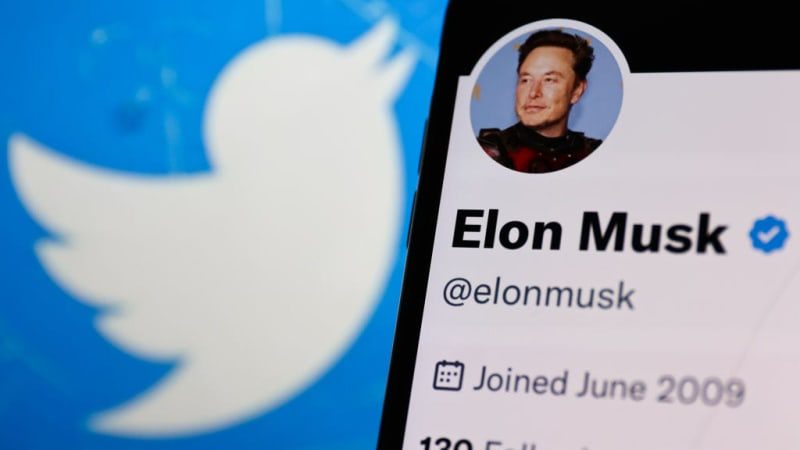The lesson Elon Musk didn't learn from the Tesla Roadster in building X from Twitter

Elon Musk account on Twitter displayed on a phone screen and Twitter logo displayed on a laptop screen are seen in this illustration photo taken in Krakow, Poland on November 14, 2022.
Jakub Porzycki/NurPhoto via Getty Images
It’s been one year since Elon Musk closed the deal to acquire Twitter.
Despite some bold, even shocking, moves, Musk’s ownership has failed to usher in meaningful improvements to the platform.
Jasmine Enberg is a social media columnist for CMO Insider, covering the companies, creators, and internet culture. Enberg is a principal analyst at Insider Intelligence
There’s a line in Walter Isaacson’s biography of Elon Musk that I can’t get out of my head.
“In retrospect, it would have been much smarter to start with a clean-sheet design and not try to modify the Lotus Elite,” Musk told Isaacson about the early days of making the Tesla Roadster.
One year after the tumultuous acquisition of Twitter, I find myself asking: Would it have been easier for Musk to start X with a “clean-sheet” design than to modify Twitter?
Musk was always the most likely Twitter-killer
Musk’s treatment of Twitter as a technology company that he could remake in his vision, rather than a social network fueled by people and ad dollars, is the single largest cause of the demise of the platform formerly known as Twitter.
True, Twitter’s revenues would have taken a hit in 2022 due to the ad pullback, and the platform was starting to lose some of its cultural relevance and user engagement prior to the acquisition. But the litany of missteps that led to a user decline, advertiser exodus, and a deterioration of the platform as a central hub for news was almost entirely Musk’s doing.
The dismissal of longtime and trusted Twitter employees who could have helped avoid some of the issues further exacerbated the problem.
Insider Intelligence expects X’s worldwide ad revenues to plummet by 54.4% in 2023 to just $1.9 billion. That’s down from $4.1 billion in 2022, when ad revenues are estimated to have fallen by 7.2%.
While many of Musk’s moves may be shocking — from the July rebrand to the disbanding of most of the trust and safety teams, and now the possibility of subscription tiers for all users — they shouldn’t be surprising. Almost immediately after announcing his bid for Twitter, Musk began publicly talking about transforming the platform into “X,” a WeChat-like “everything app” with a payment system. He had also been vocal about his desire to promote “free speech” on the platform.
Musk is now learning the hard way
Social media is as much about the people as it is the technology. People define the culture of a platform, and for all of its flaws, Twitter was a beloved brand with a clear role in the social media landscape. It also had a loyal user base, most of whom didn’t share the same desire to “free the bird” as Musk did.
That’s not to say that developing a pay-to-play social network isn’t a good idea. But trying to convince people to pay for a platform they are used to accessing for free, while simultaneously tearing it apart, was not a strong strategy to gain user buy-in.
Compounding the issue was that X has a failure-to-launch problem. While Twitter lagged behind its peers in product innovation prior to Musk, he hasn’t delivered on his “everything app,” either.
Musk hasn’t managed to make any meaningful improvements to the platform, and features that were introduced like the new Twitter Blue (now X premium) have been marred by delays or technical issues. Users and advertisers have lost faith in Musk’s pronouncements, and CEO Linda Yaccarino has not been able to restore their trust.
One area where Musk has delivered is in content moderation. To be fair, social media content moderation problems predate Musk, and there is an argument to be made that Twitter and others sometimes took too heavy a hand.
But X’s reliance on “Community Notes” to label misleading or unsubstantiated content combined with the amplification of posts from verified accounts, who represent a small fraction of X’s user base, led to an even greater spread of misinformation, which became clearly visible as a result of the Israel-Hamas war.
It remains to be seen what will rise from Twitter’s ashes. One year later, Musk is no closer to his vision of an “everything app.” And while it may not necessarily have been easier for Musk to start X from scratch, it’s tough to imagine that it would have been significantly harder, either.



